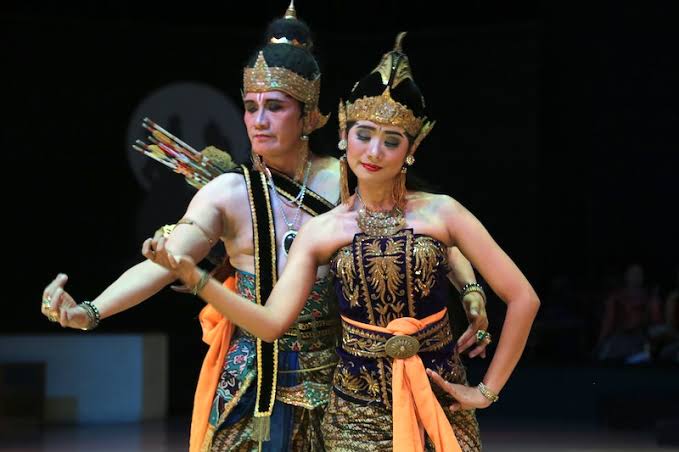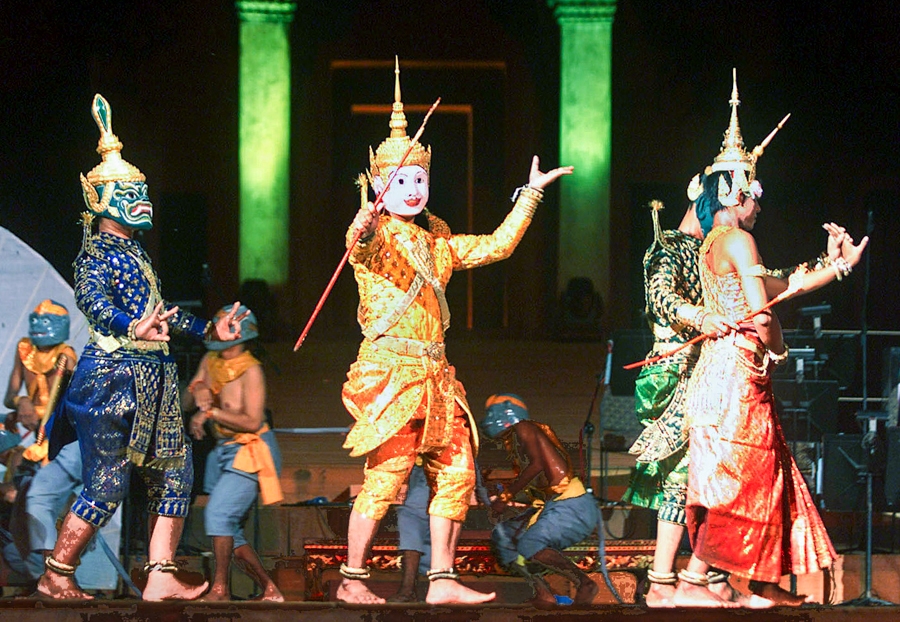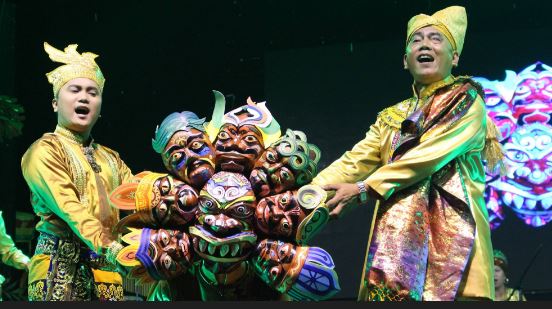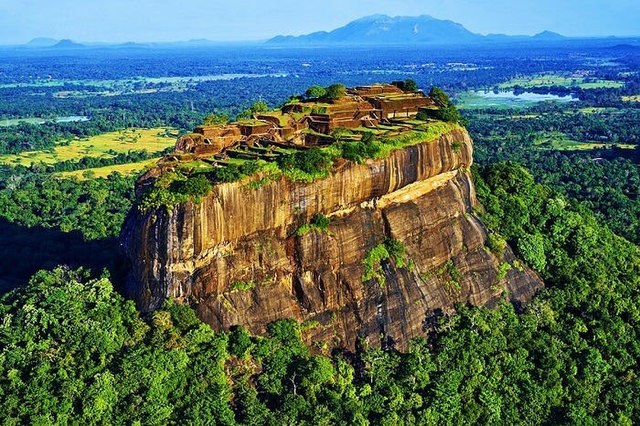(November 8, 2023) Ramayana, the ancient Indian epic, and the most revered text of Indian mythology stands as a timeless narrative that has transcended borders and evolved in multiple versions. The universal tale of the Indian mythology ventured into distant lands from India, in places like the heart of Indonesia to the exotic temples of Cambodia, and even the archipelagic Philippines. These adaptations, weave the lasting influence of the Ramayana on different cultures. Global Indian uncovers the footprints of the Ramayana in locales outside India, and how this has led to twists on the story of the timeless epic.
Kakawin Ramayana: The Indonesian twist on an Indian epic
The Ramayana arrived in Indonesia in the 8th or 9th century, and is known there as the Kakawin Ramayana. It has deeply influenced Indonesian culture, particularly among the Javanese, Balinese, and Sudanese communities, serving as a moral guide and a form of artistic expression. Traditional Wayang puppetry, including Wayang Golek and Wayang Kulit, helped integrate the Ramayana and Mahabharata into Indonesian culture.

Indonesia’s artists depicting the story of Ramayana on stage
While the Kakawin Ramayana shares many characters with the Indian version, it also incorporates indigenous Javanese deities like Semar and his four sons. One notable difference is the portrayal of Sita, who is depicted as a strong and assertive figure in the Kakawin Ramayana, in contrast to the demure and patient Sita in the Indian version.
Ramakien: Thailand’s unique take on the Ramayana
In Thailand, the Ramakien, meaning the ‘glory of Rama,’ has become a national epic. King Rama VI played a crucial role in popularising it. The origins of the epic can be traced back to Vishnu Purana, Valmiki’s Ramayana, and the Hanuman Nataka. While the original epic portrays Lord Hanuman as acting alone when setting Lanka on fire, Ramakien tells of how he led a monkey army in the attack on Krung Longka (Lanka). Hanuman used his magical powers to create a bridge for his monkey soldiers to overcome the water barrier.

Thailand’s artists depicting the story of Ramayana
Unlike the original Ramayana, which primarily focuses on Lord Rama and his virtues, Ramakien delves deeper into the character of the demon king, Tosakanth. Ramakien admires Ravana’s resourcefulness and portrays his abduction of Sita as an act of love, evoking sympathy.
Reamker: Cambodia’s enduring Ramayana influence
The Cambodian rendition of the Ramayana, known as ‘Reamker’ or ‘Ramakerti,’ traces its roots in Cambodian culture as far back as the 10th century AD. Ancient Hindu temples in the region contain early references to the Ramayana, while the famous Angkor Wat temple showcases various episodes from the epic. In Reamker, Lord Ram is referred as ‘Preah Ream,’ Ravana as ‘Krong Reap,’ Sita as ‘Neang Seda,’ and Lakshman as ‘Preah Leak,’ while Hanuman retains his name with a slight pronunciation variation.

Artists of Cambodia depicting the story of Ramayana on stage
The influence of the Ramayana on Cambodian culture is strong the story is depicted on Angkor’s bas-reliefs and temple frescoes. It’s a central theme in the traditional shadow play, ‘Sbek Thom’ and also forms the basis of the popular masked dance Ikhon Khol. Cambodians revere the character of Ram not only from a Hindu perspective but also as an embodiment of the Buddha himself, adding a unique layer of significance to the epic.
Hikayat Seri Rama: Malay adaptation of the Ramayana
Hikayat Seri Rama is the Malay adaptation of the Hindu Ramayana, believed to have been written between the 13th and 15th centuries. It’s one of Malaysia’s oldest known manuscripts and quite likely the oldest illuminated Malay manuscript. While the core story remains faithful to the original Sanskrit version, some aspects were adjusted to fit the local context, including names’ spelling and pronunciation.

Malaysia’s artists depicting the story on stage
Over time, numerous branch stories emerged in the Malay adaptation of Ramayana, elevating minor characters or introducing new ones. For instance, in some variations, Laksmana takes on a more prominent role, often overshadowing Rama. Rama, though virtuous, is sometimes seen as less decisive, with the younger Laksmana admired for his courage and assertiveness.
Maharadia Lawana: Ramayana’s Philippine influence
The famous Filipino ‘Singkil’ dance, rooted in the Ramayana, is a cherished folk dance of the Maranao people of Lake Lanao. The Hindu religion reached the Philippines from the Majapahit Empire between the 17th and 19th centuries. During this time, the epic integrated into the Philippines’ folk literary tradition.

Phillipines’ artists depicting the story of Ramayana on stage
In the Maranao tribe, the Ramayana takes on a unique form known as ‘Maharadia Lawana,’ narrating the tale of an immortal ‘monkey-king’. This local dance style encapsulates the Ramayana’s story, although certain elements are adapted or omitted. Notably, details about Lawana’s (Ravana’s) birth, death, and his motivation for kidnapping Sita are excluded. The fate of Lawana after combat remains ambiguous. In this version, Vibhishana’s character is absent, and Hanuman and Lava-Kusa merge into a single character, Lakhsamana.
Sri Lanka’s Ramayana journey: Echoes to heroic Ravana
Although there is evidence of early poetic works related to the epic within literate circles in Sri Lanka, especially in Kumaradasa’s fifth-century Janakiharana, it wasn’t until the 14th century that a substantial influence of the Ramayana became apparent in Sri Lanka. During this time the story got amalgamated with the Sinhala Buddhist folklore, literature, and temple practices. Ravana, in this version, is celebrated as a heroic figure, renowned for his exceptional warrior skills and compassionate rule, accompanied by remarkable intellect. Additionally, some even assert that Ravana may have been the first to pioneer aviation, centuries prior to the Wright brothers’ achievements.

This is considered to be the remnants of Ravana’s Fort in Sri Lanka
Sri Lanka and the Ramayana share a deep-rooted connection since the island nation has a significant mention in the Ramayana. It is believed to be the kingdom of Lanka, where the episodes of Lord Rama’s quest to rescue Sita unfolded. The interlinking of Sri Lanka with the epic has made the tiny island nation an integral part of the larger Indian cultural tapestry.
The multiple adaptations of Ramayana illuminates the power of storytelling and the ability of one epic to resonate with diverse societies, transcending geographical and cultural boundaries. These adaptations have enriched the world literature and has helped India’s epic tale gain global significance.




Jai Sree Ram. Good information on Ramayana adaptions.